“Beverly Hills Cop: Axel F” Director Mark Molloy on Capturing That Eddie Murphy Magic
Mark Molloy is just as much a fan of Beverly Hill Cop as you are. Growing up, the Australian native had an Axel Foley poster pinned to his bedroom wall and turned that into helming the fourth installment of the franchise, which hits Netflix on July 3, nearly 40 years after the original 1984 film.
This time, Foley (Eddie Murphy) finds himself in Beverly Hills protecting the life of his daughter Jane (Taylour Paige) as they uncover a conspiracy connected to the drug cartel. Cohorts Billy Rosewood (Judge Reinhold) and Taggart (John Ashton) both return, as does newcomer Detective Bobby Abbott (Joseph Gordon-Levitt). What transpires is a quintessential Axel Foley ride rife with comedy, action, and a few surprises, but done so with a ton of heart.
In guiding the story, Molloy knew he wanted to make a film that had the same “style, spirit, and ethos” as the original films. “My pitch to Jerry Bruckheimer and everyone was I love Beverly Hills Cop 1 and Beverly Hills Cop 2 for different reasons, and I want to go back to the well and make a film in the way they created those films,” Molloy tells The Credits. “Those films are gritty and grounded, and they are very honest. So I used that to filter through everything.”
What helped to ground Beverly Hills Cop: Axel F was shooting larger set pieces practically rather than relying on visual effects or virtual environments. “I wanted to shoot all the action in camera, even all the driving scenes with dialogue. I wanted to go back and ground the film like they used to,” he says. “But also, on some of the action stuff, I wanted to make some mistakes. People don’t make mistakes anymore in film. Everything’s so designed, choreographed, and perfect that you don’t get a real sense of danger. So I wanted to make it imperfect again as I think it grounds the characters and the film, too.”
Find out how Molloy rebooted the beloved franchise for fans new and old.
You worked with your cinematographer, Eduard Grau, previously. What did you two and production designer Jahmin Assa discuss in terms of the visual language?
We all love old films, and really, my pitch was to make an ‘80s action comedy set in a contemporary world. We wanted it to have a timeless nature, so we tried to build that in the look of the film. We shot the way Tony Scott did in the ‘80s with really big, long zooms and added a little bit of grit that sort of had a grounded, honest feel to it. Then with the sets, even the design of all the police cars, we kept trying to make things feel as timeless as possible. Because we know we’re in a modern world, I just didn’t want technology and modernity screaming and infiltrating you.
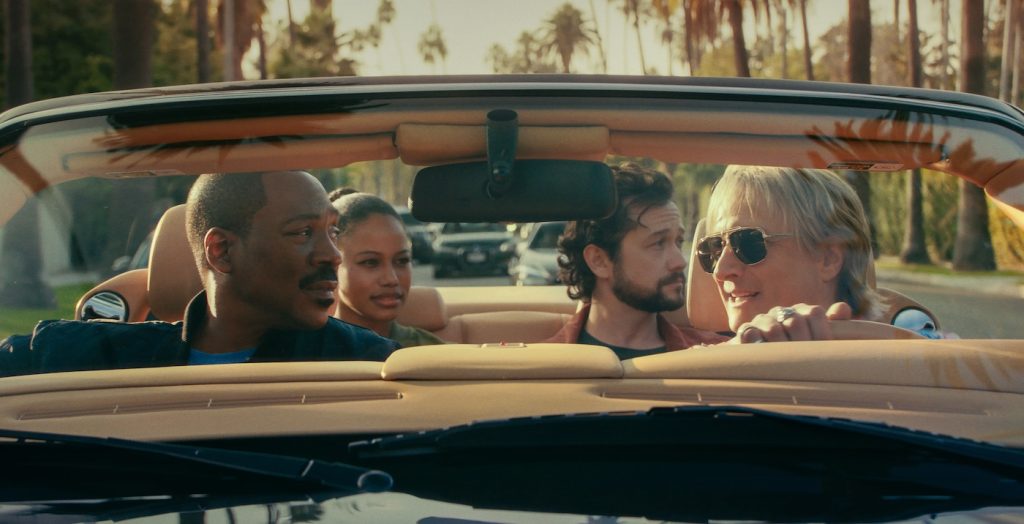
There are a ton of hilarious moments in this movie. How did you want to ensure that the comedy didn’t interfere with the story?
Well, it’s kind of lucky to have one of the greatest comedians, maybe the greatest comedian, that’s ever lived. That’s definitely a good thing. It’s also in the writing. We worked very hard with Will Beall, Tom Gormican, and Kevin Etten to really shape the comedy on the page and then also to allow the space for improvisation on set, too. That was a big part of my job— to create the right environment for that to happen. But then, it wasn’t just Eddie. Joseph Gordon-Levitt was amazing, too. The two of them were just great together. Some of the funniest moments in the film are Eddie and Joe just riffing.
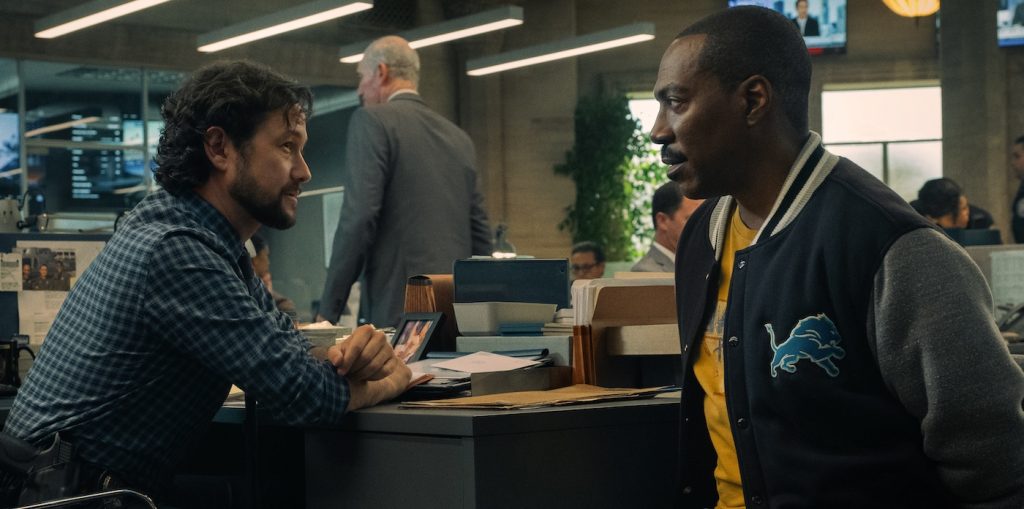
Comedy aside, the action is very entertaining. Can you walk us through the helicopter scene with Gordon-Levitt flying low through city streets?
It was a f**king nightmare because I wanted to do everything in-camera.
That’s all real? No miniatures?
Nothing. That’s all in-camera.
Congrats.
There’s a little bit of CG when it crashes, of course. But that whole scene is all shot in-camera. Even the dialogue between Eddie and Joe. That was on a truck driving down the street that moved and everything. We shot in downtown LA and had a real helicopter flying along with sparks coming off the ground. Every person had to be stunt people on the whole scene. We locked half the downtown down for days.
What gives your action pieces depth is that you connect the camera to the characters.
Yes, that was really important to me. Binding the action scenes around the characters. It’s not just about trying to create a big spectacle, it’s actually grounding those moments in character and in humor.
Another thrilling moment is the Doheny and Wilshire shootout. What was the approach for the daytime sequence?
Heat was obviously a huge reference point. But it was challenging because we shot it all for real, all on Wilshire. There was a lot of gunfire, car crashes, and important beats between Axel and his daughter Jane. It was just tricky because the sun was dropping and we had some very big set pieces.
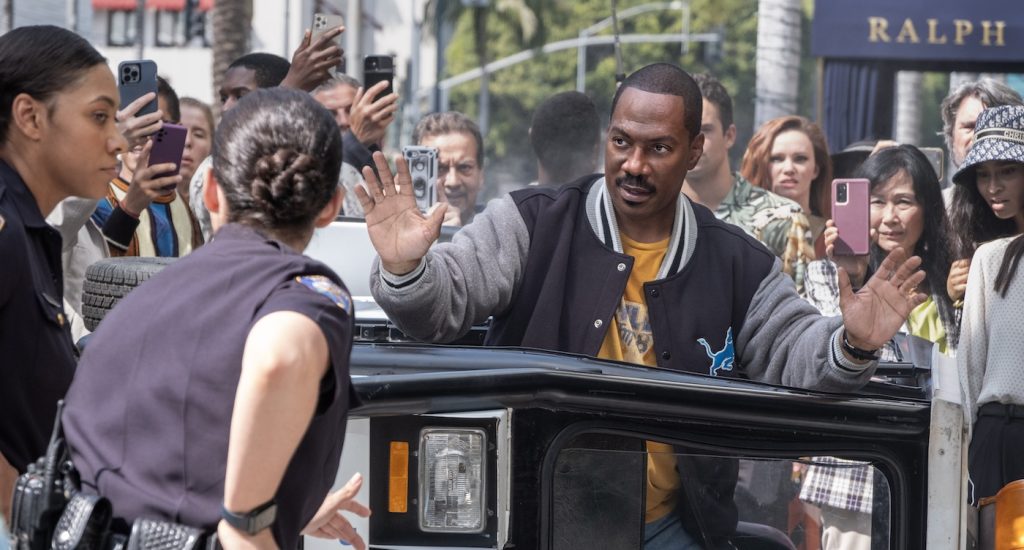
The film’s crux is the father-daughter story. Taylour Paige is magnificent in her role as Jane. What drew you to casting her, and how did that translate into building their relationship on set?
That relationship is the big reason why I wanted to do this film. I wanted to see something within the story that I’ve never felt in the franchise. And we’d never seen Axel Foley vulnerable ever. I’d seen Taylour in Zola, and I just saw this fire in her, this spark in her eye. And for anyone to share the camera and a scene with Eddie, it’s a big task. I didn’t just need someone to go toe-to-toe with him. I needed someone to be a real combatant to him. I saw a strength in Taylour and a spirit in her that I was like, I wanna see her next to Eddie. She did a brilliant job because it’s an intimidating thing to do, but she crushed it. She fits so well into the whole franchise and the ethos of Axel Foley.
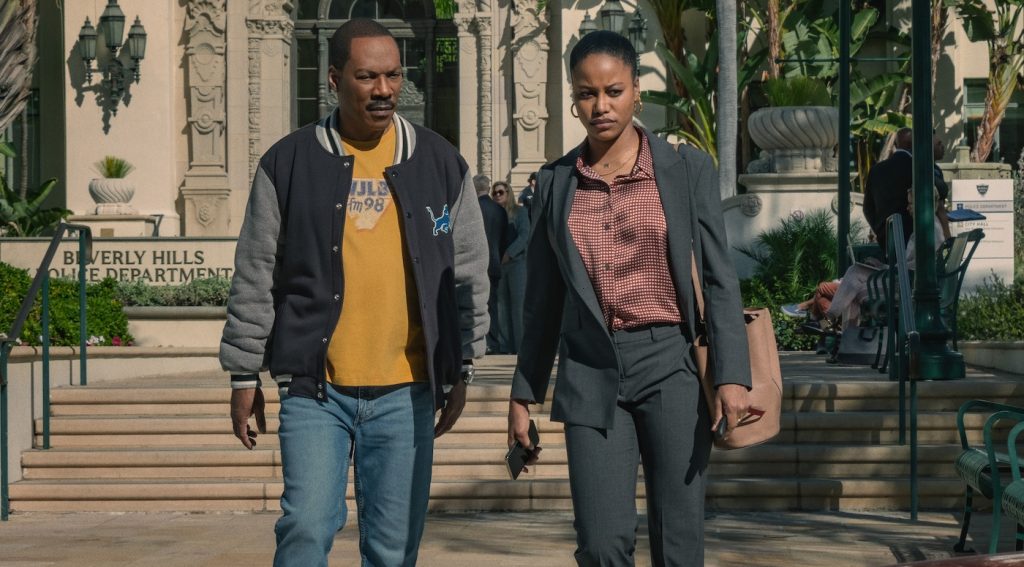
Their relationship changes Axel from a person who never believes he’s wrong to someone considerate, a father. Did you see any specific moment as his turning point?
There wasn’t an exact turning point. I think it’s more something that happens over the course of the film, and he starts to understand that he’s been sort of living life on his terms rather than really thinking about it or seeing it from Jane’s perspective. And I think the writing’s really beautiful in some of those moments where we really understand her perspective on their relationship and see his perspective.
The dynamics between Axel, Taggart, and Billy didn’t miss a beat. Did you need to say much to get them going again?
The moment those three jumped in the car together, I was just like, yes. When I first came into the film, I just had that image in my head that wasn’t in the original script. I was like, I want to see the three of them in that car again, so we wrote it. And I just remember sitting on the set, looking around, and seeing the smiles on everyone’s faces. Everyone was like, this is exactly where we want to be right now, in the car with these three guys.
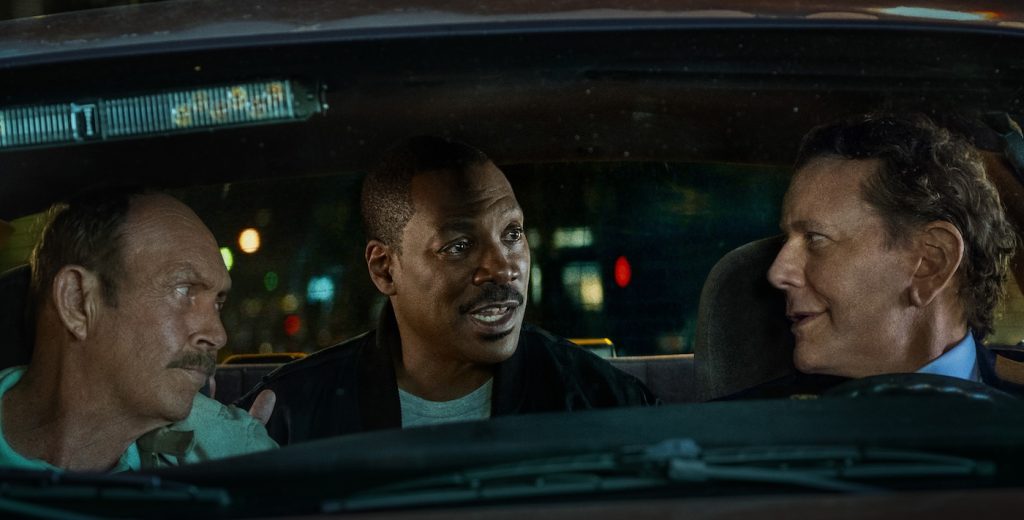
Spoiler alert – So the Axel Foley smile to end the film wasn’t in the script?
I don’t think it was in the first one.
Wow. You need that in an Axel Foley movie.
Yes, you have to have it in the script. There’s a few things I wanted. We need to see the three of them in the car together, and we’ve got to pause on a freeze frame because that’s how I’m going to finish.
Classic. Before we let you go, are you up for a no-context Rorschach test with some of the moments in the film? Just say the first thing that comes to mind.
Okay, yeah.
The Axel F theme song by Harold Faltermeyer?
To be given that and be able to use that in the film, it’s like gold dust.
“Neutron Dance” by The Pointer Sisters?
It took a while to put in this film, but when we did, I was like, oh man, yes, that is the song we’ve been missing.
Jane says to Foley: “You look like you sell iPhone cases to teenagers at the mall”?
Taylour nailed that line, and I loved it.
Foley saying during a high speed chase: “F**k a seabelt! We’re on the edge!”?
All improvised and just pure Eddie. With Joe [Gordon-Levitt] and Judge [Reinhold] in that truck together. It was a lot of improvisation.
Foley saying to Jane: “When you said that a parent’s always a parent and a child’s always a child. That’s real shit. And I really messed that up. And I’m sorry”?
I thought that was one of the greatest moments in this film. That’s the sort of moment that I wanted the audience to walk out going, “That was everything I wanted from a Beverly Hills Cop and something I didn’t expect.”
Beverly Hills Cop: Axel F is now streaming on Netflix.



